Adidas: The history of the Three Stripes on football shirts
Adidas' 'Three Stripes' have become an emblem of the brand – and it's evolved over the years…
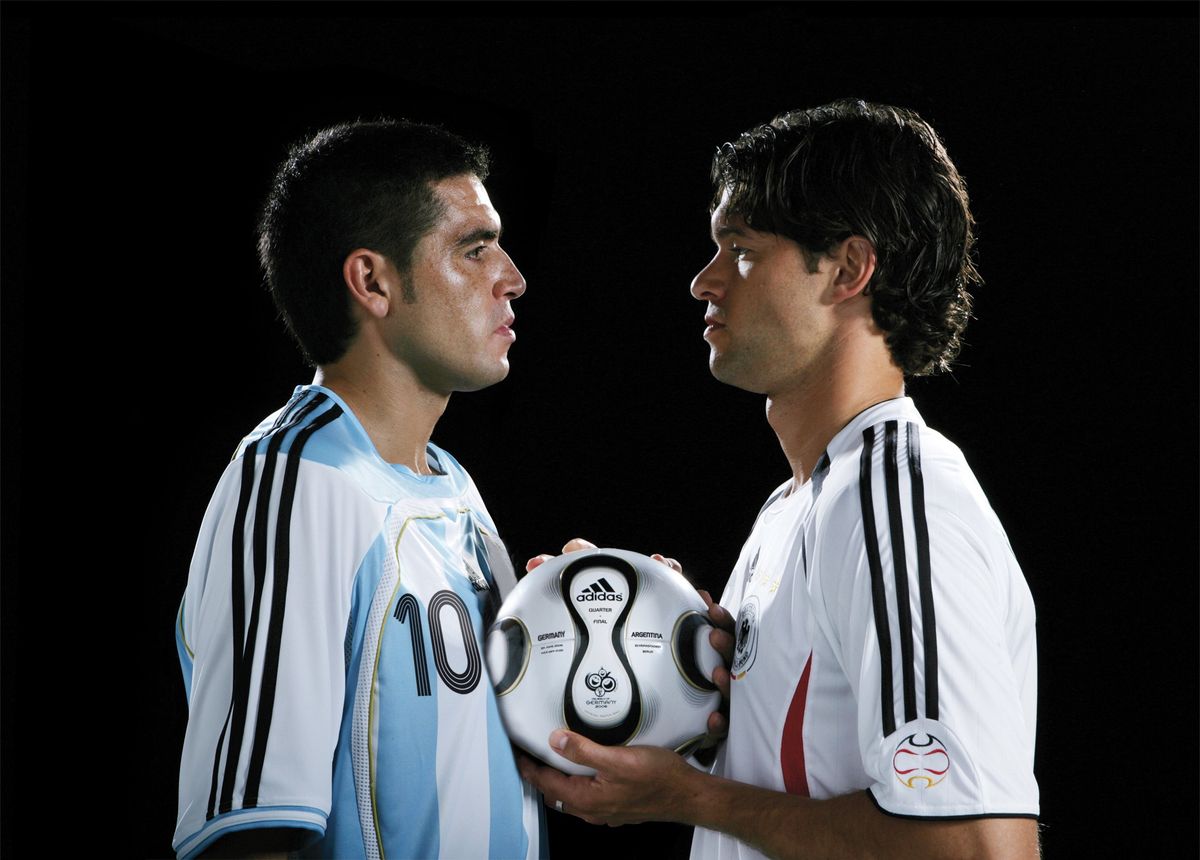
Think of Adidas and you think of the Three Stripes. The iconic design has become interwoven into the fabric of the German brand's visual identity over decades to the point where this very simple signifier is synonymous with a single manufacturer.
And over the years, the stripes have evolved, developed, grown, shrunk, moved and changed a-plenty. They weren't always on the sleeves, you know.
In 2022, Adidas kits are still some of the finest football kits around – but even in retro shirts, the stripes are as constant as the company's logo itself…
1952: Adidas acquire the Three Stripes branding from Karhu Sport

Karhu Sports were a Finnish brand who brought out footwear in the 1940s with the Three Stripes on. In 1952, the Olympic Games were held in Helsinki, Finland, where the stripes were on show.
Adidas, founded by Adi Dassler, bought the branding from Karhu. They paid just two bottles of whiskey and the equivalent of €1,600.
1972: The Three Stripes make their Olympic debut
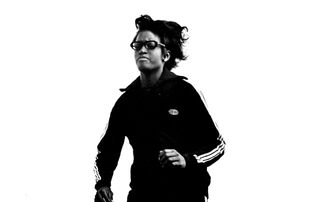
Some two decades later at the Olympics in Munich, West Germany – Dassler's home country – the Three Stripes and 'Trefoil' logo appear for the first time.
The 'Trefoil' is still used by the company today.
Get FourFourTwo Newsletter
The best features, fun and footballing quizzes, straight to your inbox every week.
1974: The stripes appear at their first World Cup…
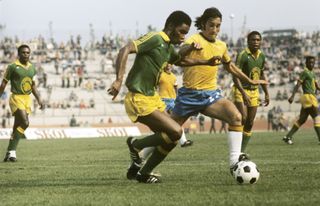
For the first time, the Three Stripes are at the World Cup – also held in West Germany.
Despite Adidas manufacturing the hosts' jerseys, though, the stripes do not appear on the white home shirt of eventual champion West Germany.
1974: …one Dutchman rebels against the stripes, in loyalty to Puma
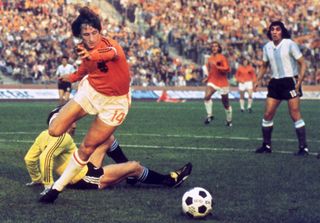
Adidas's biggest icons of that World Cup become the Dutch, who dazzle with their brand of Total Football in bright orange Adi jerseys.
But their biggest star, Johan Cruyff, is sponsored by Puma and wears Puma King boots. He decides to rip off one of the stripes on his Adidas Netherlands shirt, in solidarity with his sponsor.
1975: The stripes appear at club level
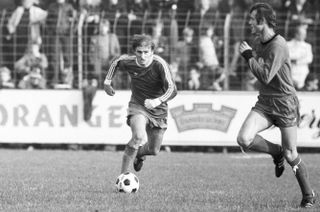
Clubs in Germany begin adopting the Three Stripes on their shirts.
The likes of Crystal Palace, Ipswich Town and Queens Park Rangers will all wear Adidas shirts in the next few years.
1978: Adidas make the Brazil national shirts
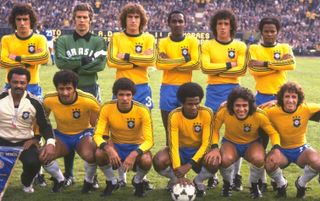
The first and only World Cup to feature Adidas Brazil shirts was 1978.
Not a vintage tournament for the Selecao – though they never lost a World Cup match with the Three Stripes down their sleeves, going out of the second group stage of the competition.
1982: The Three Stripes are well-established now
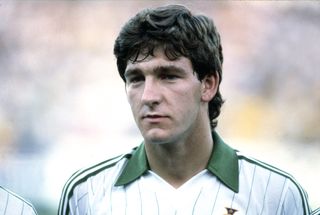
That's Norman Whiteside of Northern Ireland, who were wearing Adi kits for the 1982 World Cup.
As were Poland, West Germany, Chile, Hungary, El Salvador, France, Spain, Honduras, New Zealand and Soviet Union. All of them had the Three Stripes on their home and change strips.
1988: Adidas get bolder with shirt designs
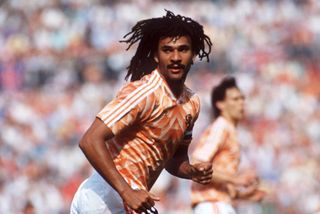
Previously, the stripes were the big embellishment of an Adidas shirt. With the stripes becoming so recognisable in the 80s, however, the manufacturer had to come up with more exciting designs alongside the stripes.
In '88, the Netherlands were given their iconic Euro-winning shirt, while West Germany got this design in teal for their away strip. The Soviet Union and East Germany both received similar shirts, while the West Germany home shirt is another classic, with the German flag adorning the front with an iconic design.
More wacky shirt designs would follow, with the small stripes down the sleeves – such as Arsenal's bruised banana top. Adidas were evolving…
1991: The stripes begin to grow

Now we're in the 1990s, another time of iconic designs for Adidas, who kept stripes on the sleeves and made them the focus of the shirt once more.
How? By making them massive. This home top from Marseille became an instant classic.
1992: France get double-shoulder stripes

The patterns began to evolve even more, with France getting this get-up ahead of the 1992 Euros. Sweden also had big stripes over their shoulders for a shirt immediately recognisable at the tournament.
1993: Arsenal get an Adidas sash
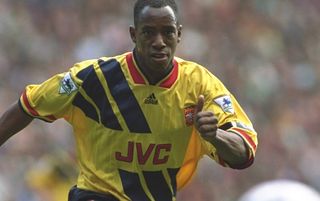
The closest thing to a sash that Adidas have done with the stripes?
This shirt might not be as beloved as the bruised banana from 1991 but it's an interesting marker in Adidas's history nonetheless.
1993: Liverpool have a new kind of stripe, too
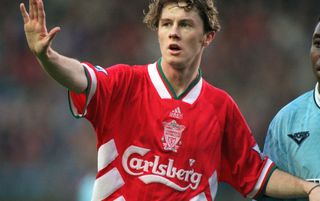
By now, the stripes are no longer just on the sleeves.
Liverpool had a Marseille-style home jersey with giant shoulder stripes – and also had this home shirt, along with a similarly-patterned away effort.
1995: Stripes around the sleeves

Something a little more minimal from Adidas, the Three Stripes move to the cuffs of the sleeves.
Rangers had a number of great Adi shirts in the 90s – but this one is still a highlight.
1996: Spain's stripes are vertical…

Euro 96 sees Adidas create bespoke designs for a number of nations, with Spain getting this home shirt for the tournament in England.
The German brand hasn't done anything similar since.
1996: …while Romania get a different style
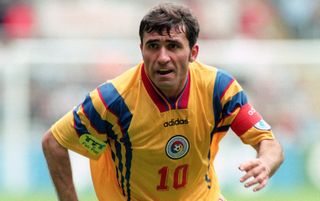
Adidas mix up their Euros shirts to give some teams traditional stripes and other teams bigger stripes in this style.
Eventual winners Germany have a plainer home shirt with smaller stripes down the sleeves, while their green away shirt looks more like this Romania top.
1996: Newcastle get a new design

Once again, the smaller, traditional stripes get moved off the shoulders.
Newcastle United have them wrapped around the chest for this top.
1998: Australia get a different design
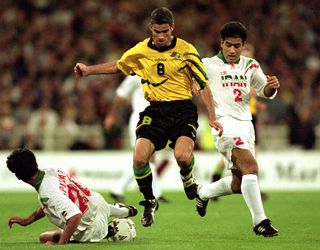
Australia fail to qualify for the 1998 World Cup, going out of qualification on away goals to Iran (yep, really).
But they too get a different iteration of the Three Stripes.
2001: Adidas continue to experiment

By and large, the bigger stripes begin disappearing during the 90s, with Adidas leaning more towards the smaller, more traditional shoulder stripes.
Occasionally though, shirts like Fulham's home top pop up with variations. The stripes on this one are vertical and just on the cuffs.
2001: Iker Casillas sees another new variation
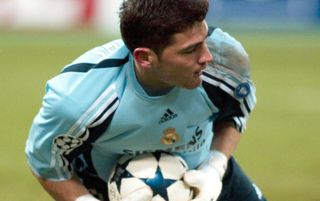
For Real Madrid's goalkeeper top of the early 2000s, the stripes shift off the shoulder and more to the front of the shirt.
Why just the goalkeeper's shirt? We'll never know. Nice, though.
2002: The stripes are shortened
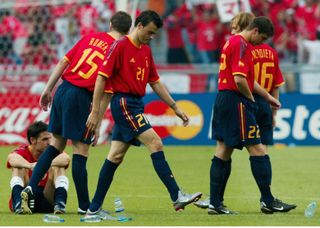
For the 2002 World Cup, Adidas were re-imagining, making an iconic set of Predators, creating the Fevernova ball and re-working their kit designs for a new millennium.
The Three Stripes have always gone all the way down the arm up until now… but not anymore. The stripes stop halfway down the sleeve – and they're no longer made from fabric but the same kind of plastic that sponsors on kits are made from.
2004: The stripes are now… sharper?
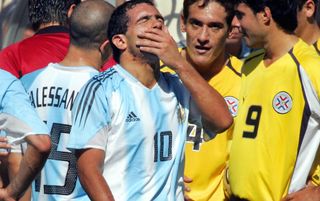
After reinventing the stripes for the World Cup in Japan and South Korea, Adidas made them pointier for their next shirts.
The likes of France, Spain and Germany all get shirts like this for Euro 2004, which essentially develop the 2002 template for something modern-looking, with the futuristic type still used on the back of the shirts.
Come 2006, however, retro is big – in music, film and fashion. Adidas go back to the traditional stripes down the arms and go for vintage 70s-style fonts on the back of jerseys.
2010: New rules come in – changing the stripes forever
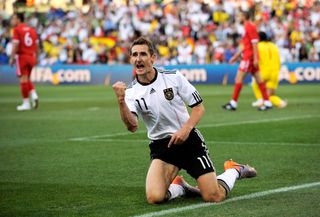
According to new regulations from UEFA, the whole of the sleeve is no longer allowed to have the stripes.
Adidas now make kits with a gap left blank for competition patches on the sleeves.
2012: The stripes get shorter…
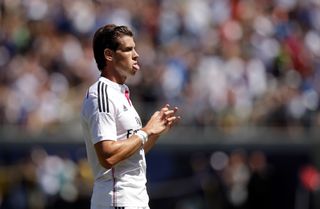
Eventually, Adidas succumb to these new rules. All of their shirts now have shorter stripes on the sleeves – more like the ones from 2002.
2016: …the stripes get even shorter

From 2016 onwards, the stripes are now just on the shoulders and not on the sleeves at all.
But Adidas have another template to refresh the icon further…
2016: The Three Stripes move completely
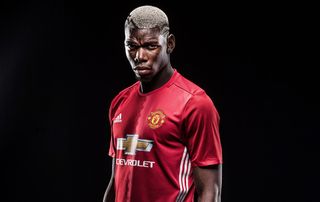
At Euro 2016, the Three Stripes are placed down the sides of the shirts, in a huge revolution for Adidas.
From now on, the brand will release the odd kit for all their major clubs and nations with stripes down the sides of the shirt rather than on the shoulders.
2018: Adidas reference the bigger stripes with their new World Cup shirts

In 2018, Adidas went full retro for the World Cup. They redesigned the original Telstar ball from 1970 and all their shirts harked back to the golden age.
By now though, kit rules state that no branding of a company can be a certain size on a kit. There's no chance that Adidas could get away with stripes as big as in the 90s – instead, they subtly added these little graphic elements, such as the stripes on the sides of this Mexico shirt.
The Germany home and away tops in 2018 are direct remakes of the 1988 shirts. It's unashamedly re-inventing past icons – but it looks amazing.
2019: The MLS get the stripes back

Given that such fusty kit laws only exist in Europe, Major League Soccer can profit.
MLS has a deal in which every kit is made by Adidas – so the brand decides to bring back the big shoulder stripes to an American audience with these beautiful designs.
2019: The stripes get subtler
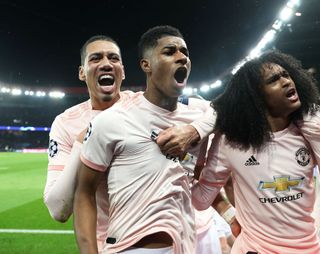
In 2019, Adidas brought back that 2002 material for the stripes, almost blending them into the shirt itself.
Manchester United got a home and third shirt like this, while Real Madrid, Bayern Munich and Ajax all get similar designs.
2021: The Olympics ban the Three Stripes
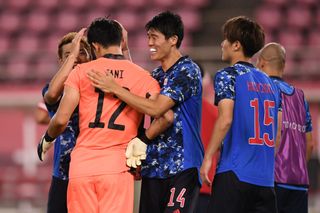
And… we've come full circle.
In 2021, the Olympic branding guidelines stated that manufacturers could only put one signifying logo on their shirts. Given that the Adidas logo was already on there, Adi removed the stripes from the adored Japan home shirt, along with other nations who were competing in football at the Games.

Mark White has been at on FourFourTwo since joining in January 2020, first as a staff writer before becoming content editor in 2023. An encyclopedia of football shirts and boots knowledge – both past and present – Mark has also represented FFT at both FA Cup and League Cup finals (though didn't receive a winners' medal on either occasion) and has written pieces for the mag ranging on subjects from Bobby Robson's season at Barcelona to Robinho's career. He has written cover features for the mag on Mikel Arteta and Martin Odegaard, and is assisted by his cat, Rosie, who has interned for the brand since lockdown.